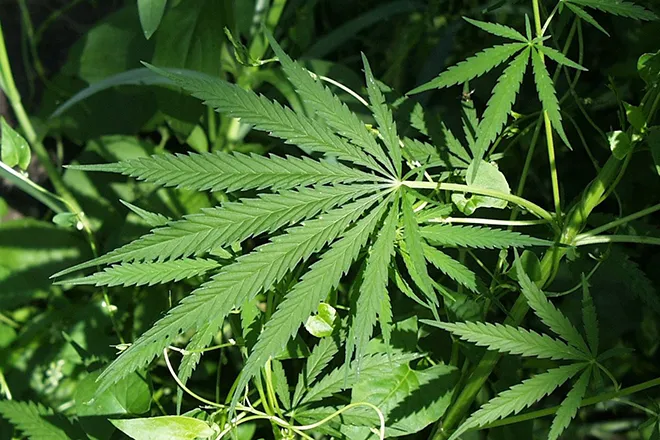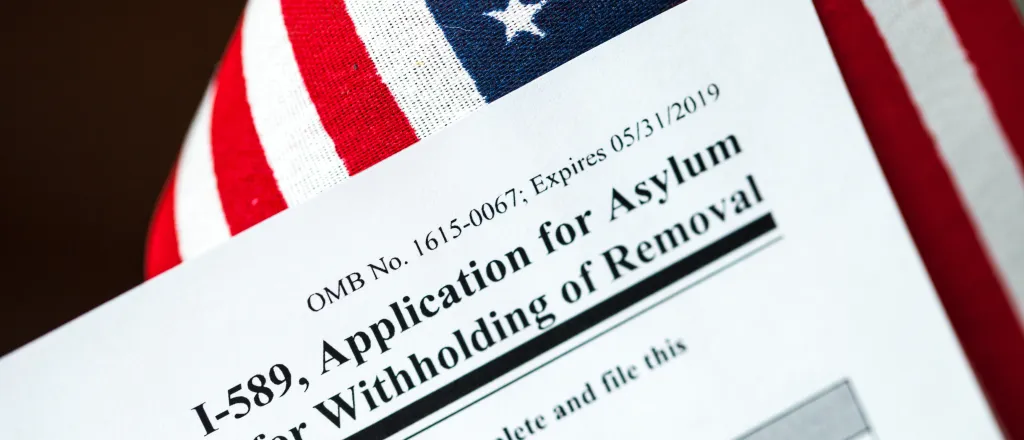
Title 42 didn’t result in a surge of migration, but border communities are still facing record migration
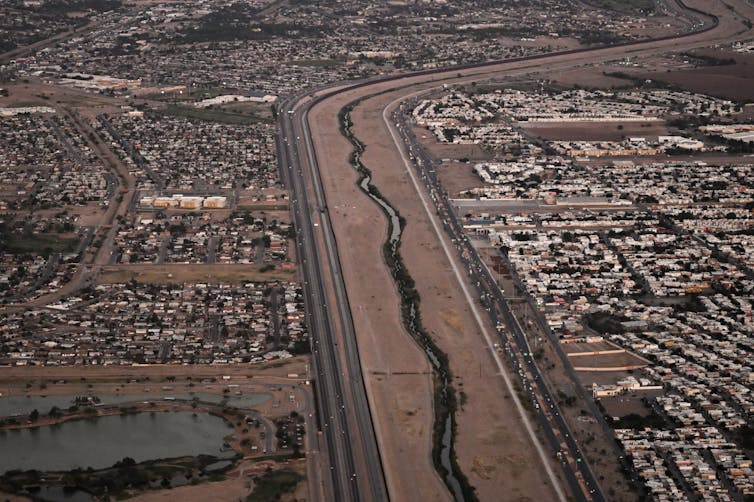
Lydia Renee Cleveland, Old Dominion University; Alexandra P Leader, Eastern Virginia Medical School, and Erika Frydenlund, Old Dominion University
U.S. government officials and media alike made widespread predictions that there would be a surge of migration across the U.S.-Mexico border in May 2023.
That’s when the U.S. lifted an emergency health policy called Title 42 that allowed the government to turn away migrants at the border to prevent the spread of COVID-19.
Title 42 ended in May 2023, but the number of migrants crossing into the border city of El Paso has actually decreased since then.
Even without a recent surge related to Title 42, however, migration across the U.S-Mexico border continues to trend upward and remains at record-breaking levels. Compared with the 16,182 migrants that U.S. Customs and Border Protection encountered in April 2020, there were 206,239 encounters in November 2022.
For the past four years, we have researched host communities around the world that receive sudden arrivals of a large group of migrants.
In El Paso, Texas, our interviews with government agencies, migrant aid organizations and residents in 2019 and 2022 highlighted what the U.S. southern border region shares with other migrant host communities facing unprecedented levels of migration and displacement.
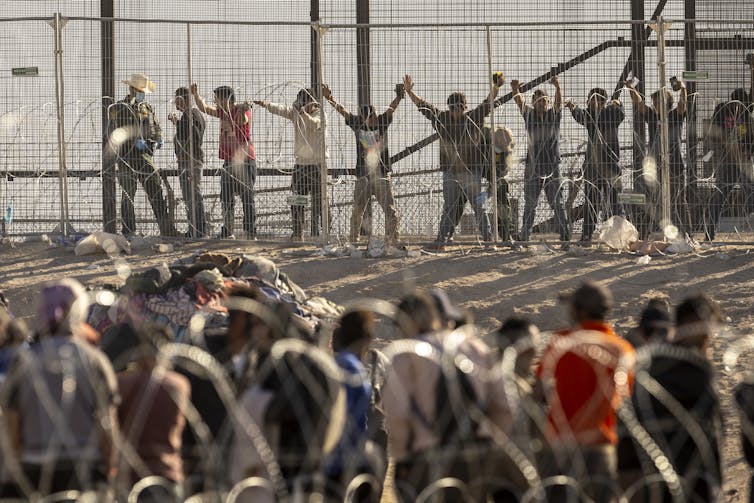
The Borderlands
Communities along the U.S.-Mexico border – sometimes called the Borderlands – have a long history serving as a corridor for migration.
El Paso even carries a name that is rooted in migration, coming from “el paso del norte,” which means “the passage to the north” in Spanish.
El Paso and Juarez, Mexico, are divided only by the Rio Grande River and a border wall. They were once united as one city until international boundaries were drawn in 1848.
In the weeks leading up to the end of Title 42, an estimated 35,000 migrants were waiting in Juarez to cross into El Paso.
U.S. Border Patrol agents generally work to monitor and manage goods and migration across the country’s border. They are also the ones who apprehend migrants and document their names and other personal information when they enter the U.S.
Typically, when U.S. border officials apprehend migrants crossing the border without documentation, they place them in detention centers. There, people can apply for asylum and await court dates to see if they qualify to stay in the U.S. – or they are deported back across the border.
In some cases, when there is a surge in migration, these detention centers – run by both the government and private companies – get full. So U.S. border officials sometimes release migrants into local communities to await future court dates.
The U.S. Border Patrol released over 13,000 migrants into El Paso in May 2023. About half of those migrants arrived after Title 42 ended.
That number of migrants is similar to trends seen in recent years, and below several peaks in 2022. At the end of last year, El Paso received more than 10,000 migrants in one week.
Borderlands’ capacity depends on locals
Our current research suggests that both real and anticipated increased migration can affect host communities in ways that aren’t captured by the national spotlight – but that still cause friction between host communities and migrants.
So far, El Paso has been able to largely avoid such tension because it has a strong network of local organizations that provide aid that allows migrants to get what they need and pass through the city quickly on their journey to their final destinations – often where friends and family are waiting to sponsor them.
While Border Patrol agents are tasked with apprehending and documenting migrants, it’s nongovernment community workers and volunteers that generally help migrants get food, shelter, water and health care.
Those community networks include those who work in local hospitals, legal clinics and migrant shelters, typically providing services free of charge.
A legal advocacy team, for example, told us that its No. 1 goal is to get migrants out of detention and their legal cases processed outside of El Paso, where the odds of being granted asylum tend to be higher.
But the backlog of migrants risks overwhelming nonprofits’ abilities to respond, extending the time migrants are stuck in the area. That puts pressure on the local judicial system to process migrants, and the resulting buildup of migrants can create tension with host communities.
These workers see the impacts of migration on their communities firsthand – both the beneficial and the burdensome – that can often make or break a host communities’ willingness to continue welcoming migrants.
Volunteer support, public facilities and the amount of time it takes for the government to process migrants are all factors that could challenge border communities like El Paso if they are stretched thin and this process is interrupted.
Across host communities, such simple matters as overflowing public trash cans and overcrowded public transportation can be a flashpoint for resentment – these can be visual cues to local communities that the migration response is not being well managed by the government.
Support is stretched thin
Rising migration across the U.S. southern border over the past decade means that health care and other forms of assistance on both sides of the border have been stretched thin for some time.
Meanwhile, cities like El Paso are dealing with compounding national health care staffing shortages.
That stress on the health care system could open the door for a deteriorating situation. Reports indicate that some Borderlands physicians struggle to care for the volume of migrants in need of care – and to also respond to migrants’ complex, acute medical conditions, sometimes the result of their previous inhumane and traumatic journeys.
Physicians in El Paso have told us they were alarmed at patients arriving with life-threatening conditions that could have been treated had migrants received health care at earlier points. They expressed concern about infectious diseases spreading in overcrowded centers and informal settlements, migrants’ deteriorating mental health and their ability to get necessary medications.
In addition to medical professional shortages, it is difficult to recruit volunteers and continue to bring in enough donations to support migrant community work in El Paso over the long term.
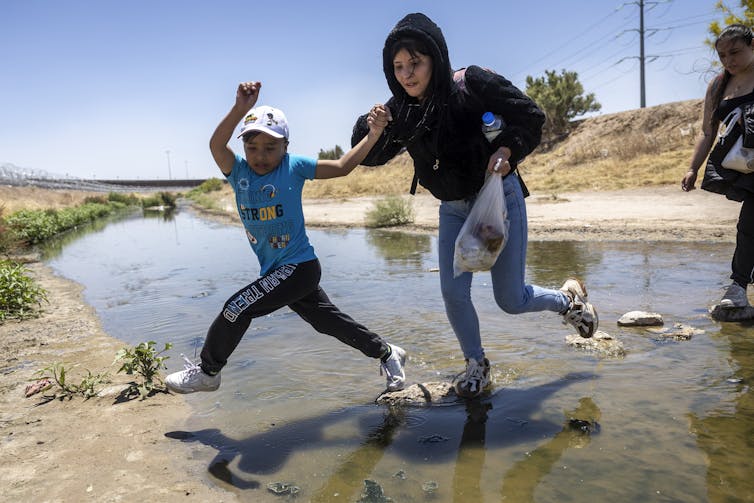
Passing through El Paso
Changes in migration numbers can quickly overwhelm or impede nonprofits’ abilities to respond, extending the time migrants are stuck in the area. When large numbers pass through, services are stretched thin. But when there are periods with less migration, services risk shutting down for good. That puts pressure on the local system to process migrants, and any buildup of migrants can create tension with transit communities like El Paso.
Rises in migration flows can end up lasting a long time, with migrants stuck for many years as they await processing by government agencies or resettlement opportunities. But what the community of El Paso has done for decades, and what it will need to continue to do to avoid both humanitarian catastrophe and social friction, is to remain “the passage to the north,” keeping migrants moving toward friends and family that will support their stay in the U.S.![]()
Lydia Renee Cleveland, PhD Candidate, International Studies., Old Dominion University; Alexandra P Leader, Associate Professor of Pediatrics, Eastern Virginia Medical School, and Erika Frydenlund, Research Assistant Professor at the Virginia Modeling, Analysis and Simulation Center, Old Dominion University
This article is republished from The Conversation under a Creative Commons license. Read the original article.










